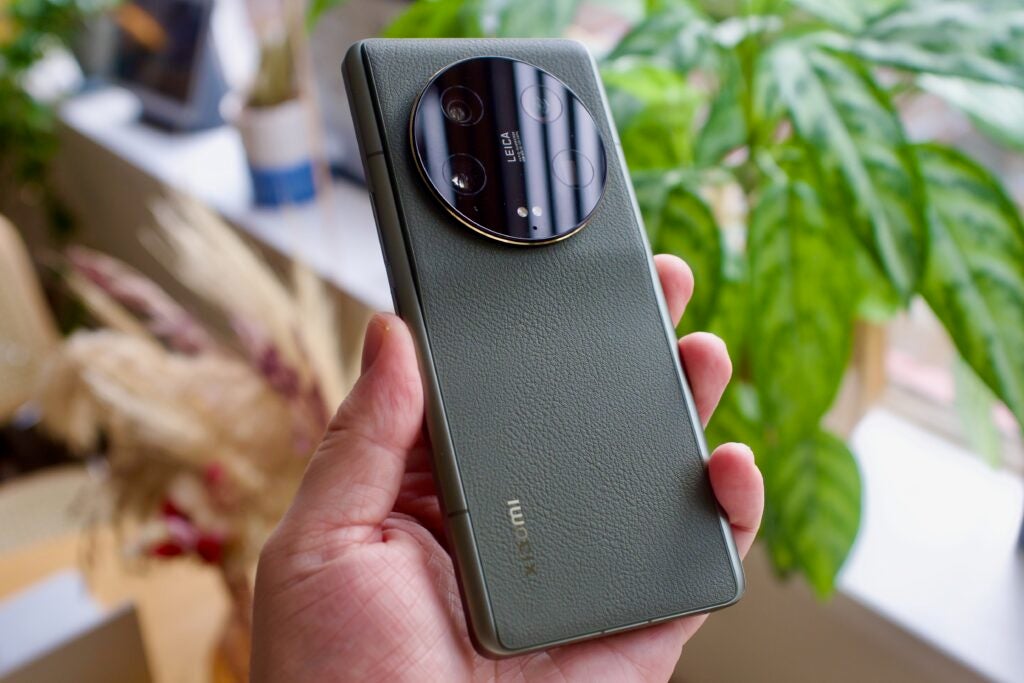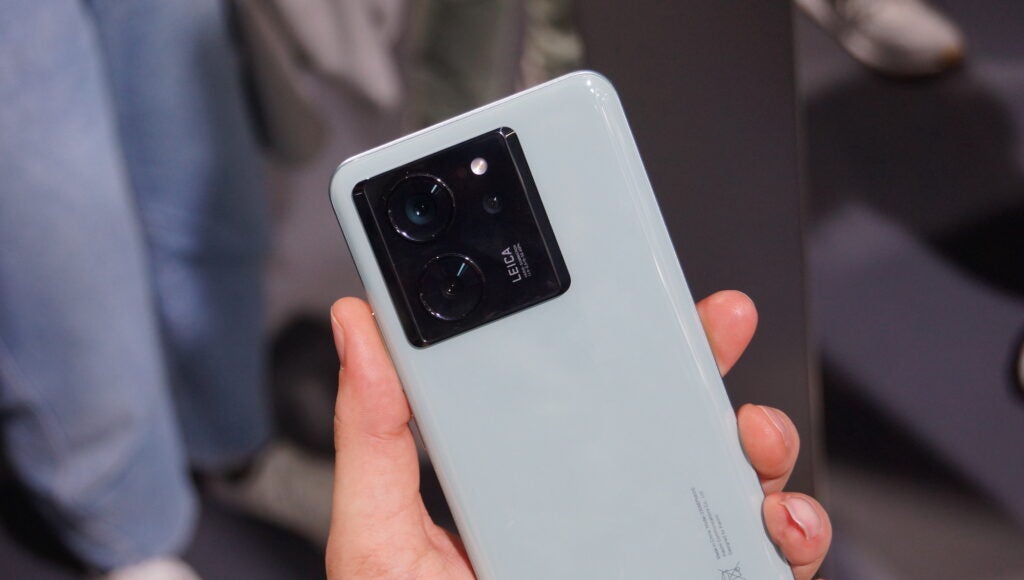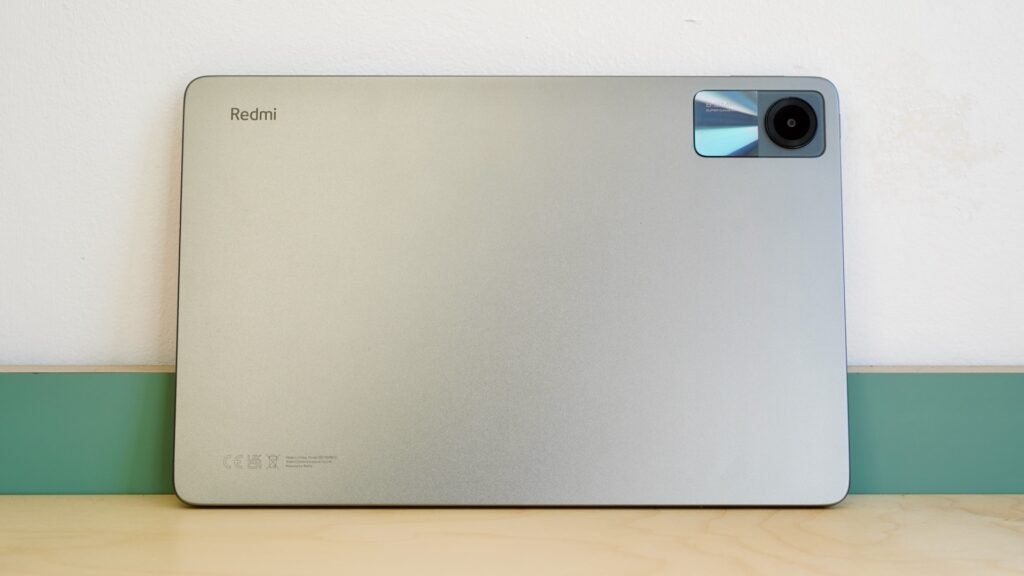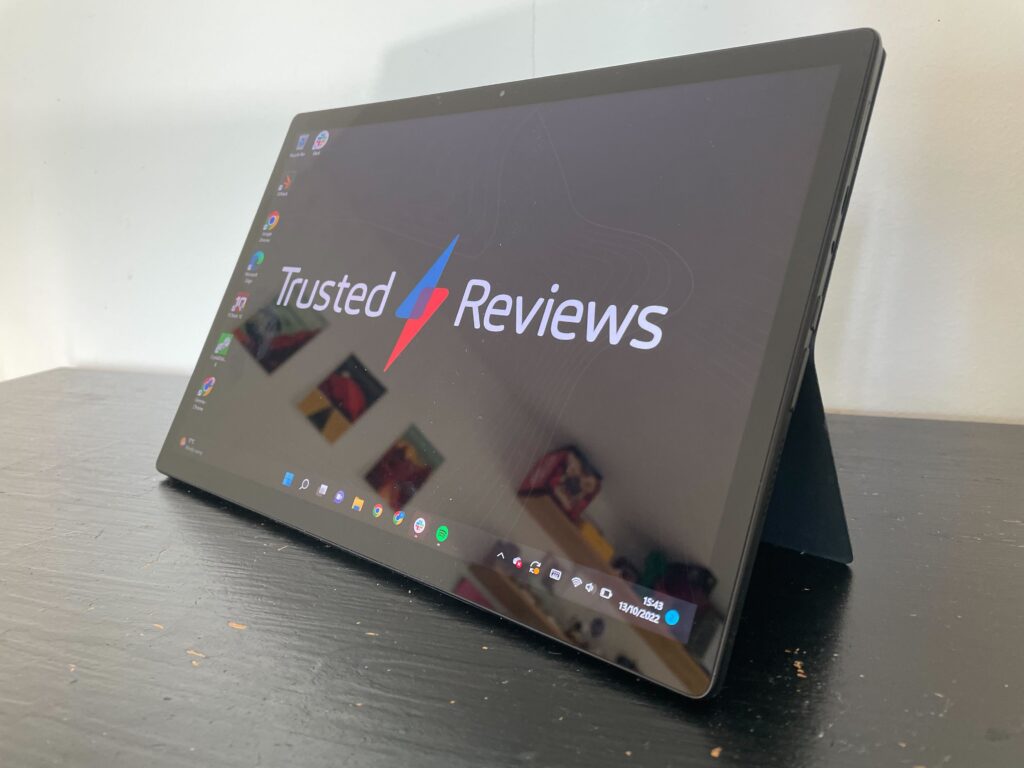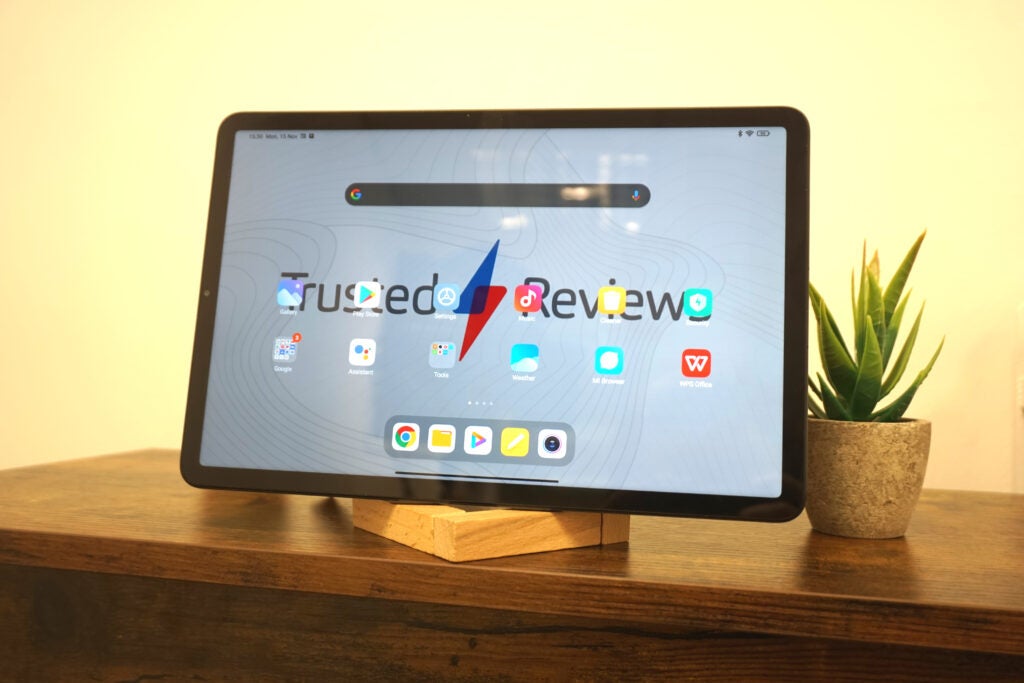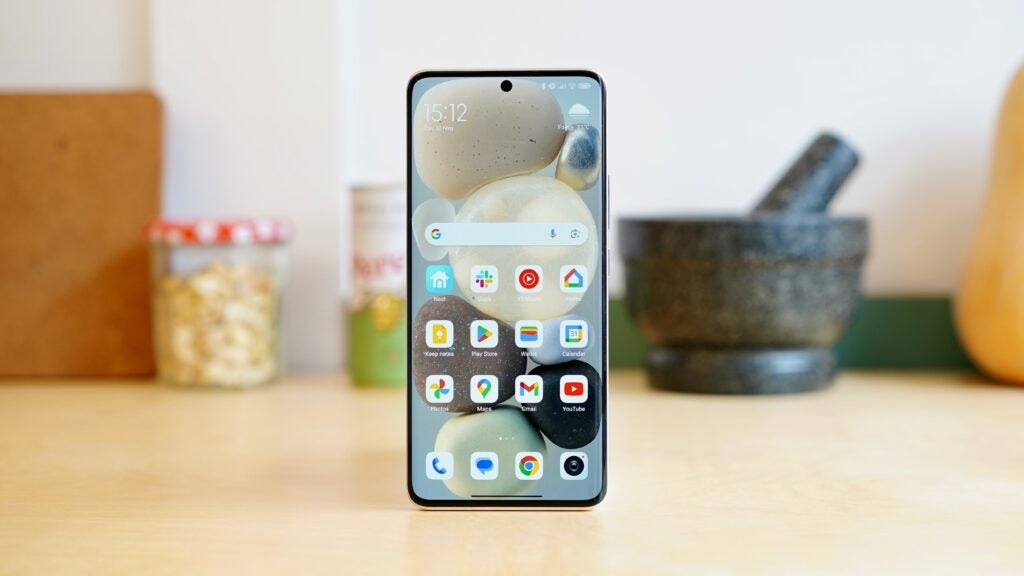
Verdict
Xiaomi has imbued its flagship Redmi phone with a welcome dose of class, with an improved design and an even better display. Rapid charging and a strong main camera make a welcome return, but so does the company’s sub-optimal software.
Pros
- Excellent 1.5K OLED display
- Much improved IP68-rated design
- Rapid 120W charging
Cons
- Cluttered, bloatware-ridden software
- Not the fastest for the money
- No lower storage options
Key Features
- 200MP rear cameraThe 200MP rear camera delivers sharp, vibrant shots in all lighting conditions, thanks to the use of 16-in-1 pixel binning
- Long battery lifeThe 5,000mAh battery will get you through two days of light usage, and 120W HyperCharge gets you topped up quickly
- 120Hz AMOLED displayThis is one of the better AMOLED displays you’ll find at less than £500, with accurate colours and a smooth 120Hz refresh rate
Introduction
Even Xiaomi’s budget sub-brand has its flagship model, and in 2024 that model is the Redmi Note 13 Pro Plus.
For £449 it offers a large, vibrant display, decent performance, extremely fast 120W wired charging, and a pixel-packed 200MP main camera.
Of course, all of that was true of last year’s model, the Redmi Note 12 Pro Plus. Thankfully, there have been some noteworthy improvements this time around, though perhaps not to the one area that needed it most.
With rival efforts like the Samsung Galaxy A55 5G and the Pixel 7a offering their own compelling takes on the classy mid-ranger, has Xiaomi done enough?
Design
- Screen now curved
- IP68 rated
- No more 3.5mm headphone jack
We found the Redmi Note 12 Pro Plus design to be a little boring, so it’s nice to see Xiaomi changing things up for the Note 13 Pro Plus.
It remains somewhat generic, but it’s a slightly classier brand of familiar. Most obviously, the new phone adopts a dual curved display in place of its predecessor’s flat screen.
I always have misgivings about such curved displays, but we’ll discuss that in a bit. For now, there’s no denying that the Note 13 Pro Plus looks and feels classier than ever.
With a similarly curvaceous back covered in glass (other regions also get an eco-leather option), it sits nicely in the hand. The frame remains plastic, rather than switching to metal, but of course there’s quite a bit less of it than before owing to the screen curvature.
Not that the device itself is any smaller. It’s still quite a chunky thing at 8.9mm thick, while a weight of 204g is only slightly lighter than before. Its footprint, too, is fractionally reduced to 161.4 x 74.2mm.
Xiaomi has done some subtle work with the rear of the phone, splitting the slightly opaque finish off around the camera module and switching to a more reflective and segmented alternative. It’s still not going to turn any heads, but it looks pretty good.
It’s encouraging to see that the Redmi Note 13 Pro Plus 5G has taken a step forward in build quality to match that design revamp. There’s a more scratch-resistant Gorilla Glass Victus around front now (up from Gorilla Glass 5), while the phone has also gained IP68 certification. That means it’s as water and dust resistant as a flagship phone.
One slight negative, depending on your level of adherence to old audio standards, is the omission of a 3.5mm headphone jack with this year’s model. I feel I’m complaining on behalf of an ever-dwindling minority when I mention such a thing – it doesn’t affect me in the slightest – but it’s a slight negative nonetheless.
You do still get Xiaomi’s customary IR blaster on the top edge though, which lets you control your Hi-Fi or TV with the preinstalled Mi Remote app.
In terms of colour options, our model comes in Moonlight White, but there are also Aurora Purple and Midnight Black options.
Screen
- Curved 6.7-inch 120Hz OLED
- Shifted to sharper 1.5K resolution
- 1800 nits (peak)
After playing it safe with last year’s model Xiaomi has stepped up its display game with the Redmi Note 13 Pro Plus 5G.
It’s still a 6.67-inch AMOLED, and a brilliantly vibrant, colour-accurate (in the Standard colour scheme at least) one at that. But Xiaomi has stepped up the resolution this time around, with a 1.5K (1220 x 2712) adding a crisper edge than the usual FHD+ spec.
It can hit 1800 nits in peak conditions, which means that it does its boldest work in HDR scenarios, and there’s full HDR10+ and Dolby Vision support. It’s one of the very best mid-range phones on which to watch high-quality video content.
While it’s not a new feature, you also get 1920Hz PWM dimming, which helps reduce eye strain at low brightnesses.
One development that I’m not so keen on from anything but an aesthetic perspective has already been mentioned. The Redmi Note 13 Pro Plus now has a dual-curved display rather than a flat one.
This looks smart, but has all the usual drawbacks, including the odd false input from your holding hand, as well as full-screen landscape videos that are never perfectly rectangular. In practice, neither issue is quite as bad here as it is on other rounded phones, as the curvature isn’t super-pronounced, and there’s still plenty of frame to grip onto.
Performance
- MediaTek Dimensity 7200-Ultra
- 12GB RAM
- 512GB storage
There’s a new chip being used with the Redmi Note 13 Pro Plus in the shape of a MediaTek Dimensity 7200-Ultra. From what I can gather, it’s essentially the same chip as the Dimensity 7200 Pro used in the Nothing Phone (2a), which is a pretty decent performer.
The Redmi is around £100 more expensive than that phone, but you do get 12GB of RAM as standard with the sole UK model. It’s sufficient to run everything smoothly, even with that increase in display pixels. You can include games in that too, though you’ll likely want to cap the graphical settings at medium for more advanced 3D titles.
Benchmark scores position the Redmi Note 13 Pro Plus 5G well below the Samsung Galaxy A55 5G in CPU multi-core performance, and about even on the GPU side. Again, the latter is notable given that the Redmi’s processor is having to work overtime to push those extra pixels around.
The Pixel 7a gives it a good hiding on both counts with its flagship(ish) chip for similar money (or even less, now that the Pixel 8a is upon us) as does Xiaomi’s own Poco X6 Pro with its more advanced MediaTek Dimensity 8300-Ultra. The latter goes all out for gaming performance on a budget, of course, and as such makes its concessions elsewhere.
As I found with the Nothing Phone (2a), this is a chip that runs nice and cool under load, meaning it doesn’t throttle back after a few minutes of running flat out.
You also get a very generous 512GB of storage as standard with the Redmi. While a lot of storage is always nice, however, I can’t help wishing that Xiaomi had made the lower capacity option (which still gives you a healthy 256GB) available in the UK for a price closer to £400.
Camera
- Strong 200MP main camera
- 8MP ultra-wide with 2MP macro
- 16MP selfie camera
We’ve built up quite a sense of momentum up to this point, with tweaks and improvements across the board, but Xiaomi has held fast with the Redmi Note 13 Pro Plus’s camera system. It seems to be exactly the same as before.
Given how impressed we were with the 200MP main sensor, that’s understandable. This large 1/1.4″ sensor, backed by OIS and a 7P lens captures sharp, vibrant 12.5MP shots without too much oversharpening. It seems Xiaomi has laid on an improved focusing system this time around.
I took a number of shots side by side with the Samsung Galaxy A55 5G, and generally found the Redmi to take the cleaner, more detailed shots.
Night shots were also preferable on the Redmi, as it retained more of the natural dark and shadow without Samsung’s overbrightening, yet it still managed to retain a certain degree of sharpness and clarity.
The main sensor also did better when zooming in, especially beyond 2x. With no dedicated telephoto camera, all of the information is pulled from that main sensor and cropped in, and the Redmi Note 13 Pro Plus still remained pretty decent at 4x.
Unfortunately, Xiaomi has also stuck with the same underwhelming 8MP ultra-wide camera as before. While it finds itself lacking in detail and dynamic range, it does make a decent effort to maintain a similar colour tone to the main sensor.
There’s also a 2MP macro camera, which is just as much of a waste of space here as it is in any other phone that chooses to employ such a thing.
The 16MP selfie camera isn’t too great either, and is one area where it falls well behind the Samsung Galaxy A55 5G. Subject detail is poor, skin tones are smudgey, and the camera seems wholly incapable of dealing with extremes of light and shadow. It also continues to apply a ‘Beautify’ effect as standard, which is an abomination.
Video capture peaks at 4K/30fps, or 1080p at up to 120fps – though you’ll need to delve through the settings menu for the Slow motion mode to achieve the latter.
Software
- Xiaomi HyperOS update
- Based on Android 14
- Plenty of bloatware
Though it technically ships with Android 13 and MIUI, the Redmi Note 13 Pro Plus has already received its update to Xiaomi’s new HyperOS UI, layered on top of Android 14. That’s the OS I used throughout my time with the phone.
It might have a different name to MIUI, but HyperOS brings across all the annoyances from that overly busy Android skin. Any differences are largely cosmetic and pretty minor, such as a slightly reconfigured quick-settings shade or a subtly different Camera UI.
This remains a cluttered and overelaborate UI with too many toggles and distractions, including needlessly separate notifications and quick settings menus, as well as an all-round unappealing aesthetic – though I appreciate that others find it more visually appealing. It runs smoothly enough, but it just lacks a certain sense of class and restraint, especially when you use it alongside the Pixel 7a.
The phone also suffers from the eternal blight of bloatware. There are three web browsers, a folder full of tools, a couple of widgets, and at least 10 preinstalled third-party apps. And yes, one of those is Booking.com.
As with MIUI before it, HyperOS is highly customisable and tweakable, and on a fundamental level it lets you get things done smoothly enough. But it just smacks of an interface that has been fussed with for the sake of it.
Three years of Android updates and four years of security patches is solid, but falls short of the Samsung Galaxy A55 5G by a year in both cases.
Battery life
- 5000mAh battery
- Rapid 120W wired charging
- No wireless charging
The Redmi Note 13 Pro Plus 5G battery and charging set-up remains unchanged from last year’s model, and I’m largely fine with that. Few manufacturers are offering anything larger than the 5,000mAh cell installed here.
I consistently found the phone to be capable of getting through a full day of light usage with around 50% left in the tank, which means it could well last you through a full two-day trip without access to a power socket. A day of intensive usage should be attainable too.
It’s not alone in this level of performance, admittedly, with the Samsung Galaxy A55 5G and the Nothing Phone (2a) laying on similar feats of stamina.
In media usage, an hour of Disney+ streaming sapped 8% of a charger, while 30 minutes of light gaming ate through 7%.
Where the Redmi Note 13 Pro Plus really excels is with its support for 120W charging. Not only will it get you from empty to full in around 20 minutes, but that speedy charger is actually included in the box. Many of its rivals offer no such provision.
The only downer I can put on the Note 13 Pro Plus charging setup is the lack of a wireless provision, but that’s still quite rare at this price. You have the Pixel 7a in the opposing column, but that’s about it.
Latest deals
Should you buy it?
You want a well-built mid-range phone
With its IP68 rating, the Note 13 Pro Plus has a flagship level of water and dust resistance.
You want a clean Android experience
It’s a Xiaomi phone, so it comes with stacks of bloatware and an overly cluttered UI.
Final Thoughts
The Redmi Note 13 Pro Plus is another accomplished mid-range smartphone from Xiaomi, and another worthwhile option in the sub-£500 range.
It’s got a super-sharp OLED display, solid performance, stacks of storage, and an accomplished 200MP main camera. Stamina is decent, the design is notably improved, and the provision of a 120W charger in the box makes its rivals look like slackers.
However, Xiaomi’s cluttered software continues to hold it back, even in its new HyperOS guise. You can get a cleaner experience, not to mention faster performance and wireless charging, from the ageing Pixel 7a for the same or even less money.
Meanwhile, the Redmi Note 13 Pro Plus’s cousin, the Poco X6 Pro, offers a broadly comparable experience (and much faster performance) for significantly less money.
How we test
We test every mobile phone we review thoroughly. We use industry-standard tests to compare features properly and we use the phone as our main device over the review period. We’ll always tell you what we find and we never, ever, accept money to review a product.
Find out more about how we test in our ethics policy.
Used as a main phone for a week
Thorough camera testing in well-lit and low-light conditions
Tested and benchmarked using respected industry tests
You might like…
FAQs
Does the Redmi Note 13 Pro Plus 5G support wireless charging?
No, Xiaomi has saved money and gone all in on speedy wired charging.
Is there a charger in the box?
Yes, Xiaomi has included an impressive 120W charger in the box.
How many years of software support do you get?
3 years of major Android updates, 4 years of security updates
Trusted Reviews test data
Geekbench 6 single core
Geekbench 6 multi core
1 hour video playback (Netflix, HDR)
30 minute gaming (light)
Time from 0-100% charge
30-min recharge (included charger)
15-min recharge (included charger)
3D Mark – Wild Life
3D Mark – Wild Life Stress Test
GFXBench – Aztec Ruins
GFXBench – Car Chase
Xiaomi Redmi Note 13 Pro Plus 5G
1115
2670
8 %
7 %
21 min
100 %
74 %
4255
1182
24 fps
30 fps
Full specs
UK RRP
USA RRP
Manufacturer
Screen Size
Storage Capacity
Rear Camera
Front Camera
Video Recording
IP rating
Battery
Fast Charging
Size (Dimensions)
Weight
ASIN
Operating System
Release Date
First Reviewed Date
Resolution
HDR
Refresh Rate
Ports
Chipset
RAM
Colours
Xiaomi Redmi Note 13 Pro Plus 5G
£449
Unavailable
Xiaomi
6.67 inches
512GB
200MP + 8MP + 2MP
16MP
Yes
IP68
5000 mAh
Yes
74.2 x 8.9 x 161.4 MM
204 G
B0CNKHH6NF
Android 14 (HyperOS)
2024
03/05/2024
2712 x 1220
Yes
120 Hz
USB-C
MediaTek Dimensity 7200-Ultra
12GB
Moonlight White, Aurora Purple, Midnight Black

